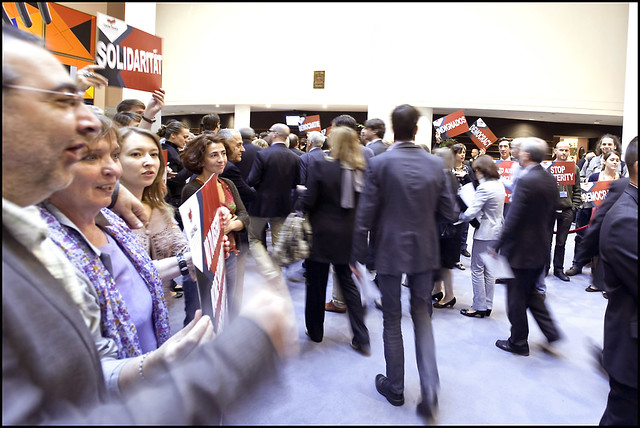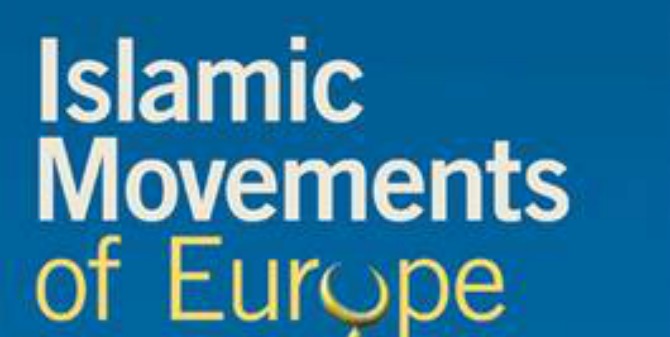 In this book Niilo Kauppi develops a structural constructivist theory of the European Union and through French and Finnish empirical cases critically analyses the political practices that maintain the Union’s ‘democratic deficit’. Ruth Houghton recommends the work to those working with EU data, policy challenges, and studies of democracy.
In this book Niilo Kauppi develops a structural constructivist theory of the European Union and through French and Finnish empirical cases critically analyses the political practices that maintain the Union’s ‘democratic deficit’. Ruth Houghton recommends the work to those working with EU data, policy challenges, and studies of democracy.

Democracy, Social Resources and Political Power in the European Union. Niilo Kauppi. Manchester University Press. August 2013.
‘A small commune is seeking finances to construct a bridge. The local officials find out that the European Union has structural funds reserved for this purpose. They hire somebody who has experience in Brussels… Quickly, [the EU-liaison official] becomes indispensable to the commune.’
When states join the European Union, they are exposed to a new ‘market place’ of resources. These ‘resources’ – which include knowledge, reputation, competence and prestige – are accessed through individuals who engage with the EU institutions, as the example above shows. Democracy, Social Resources and Political Power in the European Union suggests that the ‘democratic deficit’ at the EU continues because of the national mechanisms in and around these ‘resources’. In this book, Niilo Kauppi (currently Associate Director of the Centre for European Political Sociology at the University of Strasbourg and author of Political Sociology of Transnational Europe), builds on Pierre Bourdieu’s structural constructivism theory to explore EU integration.
Highlighting the weaknesses of traditional approaches that he claims are either too state-centric or take an international focus, Kauppi conceptualises the EU as a ‘field of forces’, in which ‘actors [are] endowed with various resources’ (p. 21). Distinct from social constructivism, which overlooks the characteristics of the individuals that construct an entity, the structural constructivist approach better reflects the complexity of EU integration. Using French and Finnish case studies from 1999, the book is divided into a study on executive legitimacy and legislative legitimacy. The democratic deficit, it is suggested, is a result of the national preference for the executive over the legislature.
The dynamic between the state and the EU is explored in Chapter 4. Kauppi draws on a number of examples to highlight the exchange between the national level and the supranational level. One such example is the changes made to the French civil service training so as to equip commissioners. Similarly, Finland went through a constitutional transformation so as to align with the ‘normal’ parliamentary style in the EU (p. 82). Yet, at the same time, states are using individuals in positions to steer EU debates in accordance with a national agenda; for example, Jean-Luc Demarty was appointed as an expert so that French national issues would be represented. The very role of an EU Commissioner is presented as ‘play[ing] two boards simultaneously: that of the European Union, and that of domestic politics’ (p. 76).
The suggestion that it is national systems that are preventing democracy at the EU is best captured in Chapters 4 and 5, where the French attitude towards the executive and the legislative is juxtaposed. Compared to the elevated status given to EU commissioners on their return to France, Members of the European Parliament (MEPs) are side-lined. Chapter 5 shows how domestic attitudes to European politicians hamper democracy. If an MEP is too pro-European, the national political system will reject them, but if they are not active enough they cannot reach the higher positions in European politics. Furthermore, the French national public consider EU elections to be of secondary concern, as manifested in the low turnout for elections, which dropped from around 47% in 1999 to 40% in 2009.
Kauppi uses the example of female MEPs to explore two broad themes: the relative status of the legislature and the complexity of integration. Firstly, the status of the European Parliament in national politics means that women can become MEPs. Secondly, the lack of women in French politics was criticised in the EU, and in response France changed its law. In 2002, 12.3% of members in the French Lower House of Parliament were women, but by September 2013, that number had increased to 26.9%. Kauppi calls this the ‘Europeanisation of French politics’ (p. 98).

The nuanced ‘struggles’ between national and supranational, executive and legislative, highlighted throughout the book, may have changed. This is because the first edition of this book pre-dates the Treaty of Lisbon, which was signed by the Member States in 2007 and entered into force on 1st December 2009. Parts of the Treaty sought to cure the ‘democratic deficit’ by strengthening the European Parliament, increasing the involvement of national parliaments and introducing an element of direct democracy through the European Citizen’s Initiative (ECI). By extending the co-decision procedure to more EU competences, therefore putting the European Parliament on an equal footing with the Council and introducing an ‘early warning mechanism’ that allows national parliaments to scrutinize EU legislation, there is a shift in favour of legislative legitimacy.
An underlying concern in the book is the construction of a European identity by politicians and bureaucrats. The ECI allows for the potential construction of a European identity by the citizens. The requirement for votes to come from a minimum of a quarter of Member States means that the initiatives have to be transnational in nature. In Chapter 7, Kauppi discusses Habermas’ suggestion that to be a ‘democracy’ Europe would need a public sphere. In order to develop this ‘sphere’, Kauppi suggests ‘common practices of opinion’ and ‘public debate’ (p.169). The ECI, and its transnational nature, could go some way to achieving this common ground, public debate and sense of identity.
The 2014 elections will provide an interesting moment in EU history and the narrative of the ‘democratic deficit’. The elections will allow the citizens of Europe to play an active part in the selection of the next President of the European Commission. Simon Hix and Christophe Crombez suggest the elections in 2014 will be ‘genuine “European” elections’. The main European parties are planning to propose candidates for the position of Commission President; the candidate from the largest party in the Parliament is likely to be elected as the Commission President. Although this does not amount to directly electing the President, these events have the potential to collapse the distinction drawn between the executive and legislative powers in Europe.
Although the EU has changed dramatically since the book was first published, it acts as an historical account of European integration. Kauppi’s framework provides a useful tool for comparisons in light of the changes brought about by the Treaty of Lisbon and changes that might occur after the 2014 elections.
————-
Ruth Houghton is a Graduate Teaching Assistant and PhD candidate at Durham Law School. Her research centres on the democratisation of international institutions. Her current research focus is on the UN Human Rights Council with a particular interest in politicisation. Read more reviews by Ruth.






